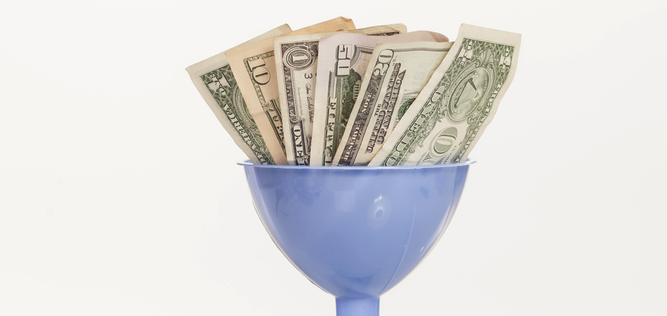Save 50% on a 3-month Digiday+ membership. Ends Dec 12.

Marc Fischman is CEO of Hyperactivate, a social media consultancy for agencies and marketers.
Last month, marketers everywhere let out a collective groan of dismay as they watched over $1.5 billion in ad spend slide down a dark drain of ineffectiveness when Gallup released poll numbers indicating that a majority of consumers don’t trust Facebook ads in the same way they trust traditional media advertising.
It turns out that the consumers they so covet use Facebook and other social media sites primarily to connect with family and friends, not to form relationships with retailers and other businesses, Gallup reports. “They are far less interested in learning about companies and/or their products, which implies that many companies have social media strategies in place that may be largely misdirected,” Gallup concludes.
For as long as I can remember, marketers have been using the marketing “funnel” as a metaphor for explaining how the marketplace works: The marketer pours lots of people into the wide mouth of the funnel via advertising and promotion. And as these individuals work their way down into the funnel, they pass through a process that begins with awareness, progresses to interest and then – hopefully – makes its way to actual trial. Of course, it’s not a foolproof method. There is a large amount of attrition in the funnel as lots of people don’t complete the passage and simply disappear.
The challenge of the marketing funnel? Each “pour” costs money. Advertising costs. Promotion costs. Brand campaign costs. All huge cash outlays just to get the people into the funnel. And every individual who disappears from the funnel costs serious money … with no possible return on the investment.
What studies like Gallup’s suggest is that the promise of social media, engaged customers who ultimately become buyers, is a myth.
Let’s go back to the funnel illustration. The good news for marketers is social media/marketing isn’t dead. In fact, it’s literally turning the funnel model on its head. And providing businesses with high-quality followers. Here’s the how and why.
Suppose it really didn’t have to cost money to advertise to your audience. Suppose you could get your current customers, your biggest fans, to do the advertising for you. For free (or as close to free as you’re ever likely to see). Suppose instead of giving large quantities of cash to TV networks, magazines, internet site publishers and the like, you could find significantly less costly ways to get those fans to use their free media to tell your story for you. And instead of using somewhat untrustworthy surrogates to tell the story – surrogates like commercials and ads – those fans actually told your story in their own, highly reputable way to their friends, fans and followers.
That is precisely how social media works.
Of course, before you can take advantage of this modern marketing miracle, you actually have to identify your best fans. You may have to provide some incentives to them (like free product, access to new things unavailable to the general public or simple recognition). and there is a cost to that. But the multiplier effect can be spectacular.
In a promotion last year for Warner Brothers launch of “The Dark Knight Rises” done by Hyperactivate, 70 individuals told more than a half million of their friends, fans and followers about how much they were looking forward to the movie’s launch and urged them to do the same to their own networks. A mere 70 individuals influenced more than a half million (and I didn’t drop a bunch of zeroes). Warner Brothers (and Hyperactivate) simply turned the funnel upside down and let social media do the heavy lifting at a very nominal cost.
Similar results have been delivered for brands as diverse as Revlon, Campbell’s Soup, M&Ms and a host of others. They are discovering the art of genuine one-to-one marketing (the identification and cultivation of these amazing friends, fans and followers) and the impact it and they can make. And instead of wasting significant budget trying to talk to people who actually don’t care, these really smart marketers are learning how to create and manage a reasonable number of highly leverageable relationships with enormous payoff.
We know that word-of-mouth counts for far more than paid advertising. Now we can actually use it.
More in Marketing

In Graphic Detail: Here’s what the creator economy is expected to look like in 2026
Digiday has charted its expected revenue, key platforms for creator content as well as what types of creators brands want to work with.

Ulta, Best Buy and Adidas dominate AI holiday shopping mentions
The brands that are seeing the biggest boost from this shift in consumer behavior are some of the biggest retailers.

Future of Marketing Briefing: AI confuses marketers but their own uncertainty runs deeper
That was the undercurrent at this week’s Digiday Programmatic Marketing Summit in New Orleans.





